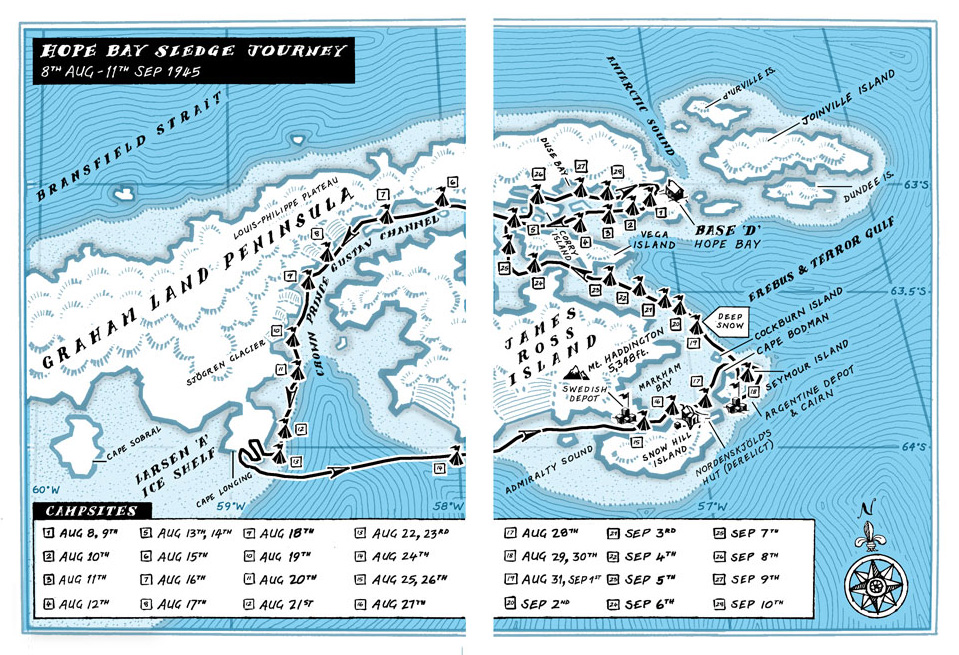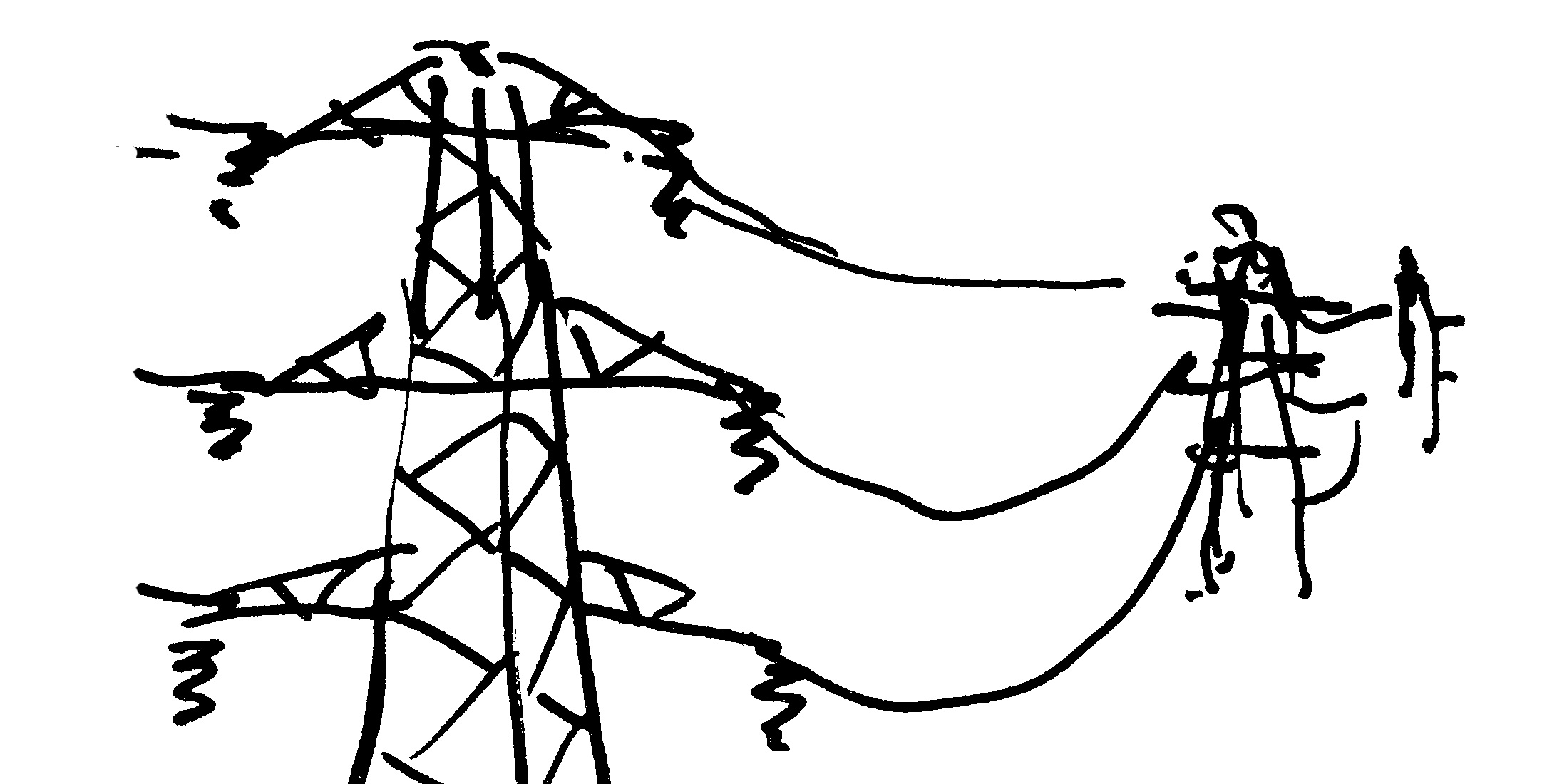I’ve long been what my glaswegian mother in law would call an outdoor bobbly hat type and first started walking when I was a small child at my parent’s side. Years later I vividly recall the realisation during my early working life that a good walk helped me put some much-needed air into a weekend and somehow acted to extended that time too – something that helped me partition the busy working weeks. I often felt this so keenly that when I didn’t manage a good walk on a weekend I’d start to feel that work commits just melded into one continous stream and that there hadn’t been a proper opportunity to just switch off or breathe momentarily. Below then is a meandering wander through landscape and walking-related influences and projects that have lead to my latest cathartic pastime: drawing while walking.

Early walking experiences: Langdale Pike, Lake District – I’m the tiddler in the camouflage hat.
Psychogeography
Fast-forward to studying part time at masters level while still teaching full time in HE and my recreational walking passion still remained all consuming. To my secret delight I was also able to incorporate this interest into my evolving studies too. I initially became fascinated with the idea of Psychogeographic walking – looking at how different environments could influence the walker’s mood and/or sense of place as you travelled through them. Writ large in this area of study is the work of the Situationists in 1950’s Paris with individuals such as Guy Debord creating maps of how areas of the city felt to those who walked through it – with some areas being recorded as positive and some negative [1]. Walking the city streets was nothing new in itself though, the Flaneurs or gentleman strollers were walking and recording their freeform wanders of both London and Paris back in the Victorian era [2]. Actually trying to map or record a walker’s reaction to place was wholly new though and an act that somehow chimed with the radical nature of the Situationists as a politically-charged movement. My own visual outputs from this period of study centred around a series of interactive multimedia emotisurvey maps of Worcester and Malvern showing how various participants reacted to their surroundings while using updated data collection techniques and multimedia visualising methods to do so.

Projects and commissions
Bringing this account up to the present day via a small detour around a number of commissions to create visual walking guide materials in the region [3] and illustrated publishing projects it’ll therefore be of little surprise to the reader that I still continue to develop these interests further today, especially so around recreational walking. I’m now studying part time at PhD level and specifically looking into how visual communication can enhance the public’s engagement with recreational walking. My area of research has a special emphasis on how the design of effective guide materials might help encourage those demographics who wouldn’t ordinarily consider recreational walking to get out into the countryside to enjoy it fully. I’ve a focus on inner city communities and cultural demographics in particular where the idea of walking (or the potential to engage with it) has simply never been considered a possibility until recent years.

Wallking during lockdown
During Lockdown 1 in March 2020 I began to explore local paths and bridleways adjacent to where I live in South Shropshire. In part this was out of curiosity after 18 or so years of living here and in part this was also due to the need to get out and get some exercise, fresh air and also some scenic views locally that weren’t just the 4 walls of my workroom at home. It was during this period that I began not only exploring but also actively mapping these new local walks to help keep a record of my findings. The project that came out of this activity became a series of short illustrated and mapped walking guide sheets: the idea being that I’d try and give back to the local community by making a number of these freely available to download online and also as hardcopy print outs in the local Tourist Information Centre. I’m pleased to say that this project has now had well over 200 downloads (even during lockdown!) and has also been taken on more widely to by regional tourism authorities Visit Shropshire and Visit Herefordshire who are both sharing the routes now too [4].

Mashing together my references
Undertaking the local lockdown project alongside wider PhD-related research at this time allowed me to start to piece together what I’d seen as previously disparate references linked more broadly to the act of walking. Many of these revolved around the reasons we can and often do enjoy a walk outside, for example: the research findings around the health benefits, the neuroscience linked to the positive effects of walking, the idea of getting into the zone when out walking or flow, the reverence for and history of walking in other cultures such as the Japanese tradition of Shinrin Yoku or ‘Forest Bathing’ and also religious pilgrimages such as the route to Santiago de Compostella in Spain.
Cathartic walking and drawing
So the landscape-linked meander finally leads to here: to drawing while walking – but why would you? Firstly it’s important to say that it’s not always an easy thing to achieve – especially if you do so entirely on the move, but it can form a unique, visceral and potentially quite cathartic method of recording the landscape you encounter on a recreational walk. My recent PhD studies have moved into a focus around Phenomenology used as an underpinning methodology. This is a similar idea to the earlier references in this article to Psychogeography – recording your reaction or feelings to place. More often data collection in the academic studies I’ve located are recorded in situ as walking interviews (called Phenomenological walks) and also as retrospectively in post walk interviews. One reference I found that really intrigued me though was the work of walking artist Rebecca Thomas who didn’t record audio testimonies like the other studies but instead she created quick, visceral reactions to place as a series of on the move sketches in her journal of a walk in the Scottish Highlands [5]. These were Phenomenological landscape drawings which helped Rachel to create a visual record of the journey and also reaction to place.
It’s simple to do..
I’ve since undertaken a series of my own such drawings while on local walks with the intention that this may form a new and much more visual method of data collection in the context of my own research to compliment any audio testimonies I might use. My own technique is simple: take a sketchbook out on your walk if you’re able (I normally use an A5 journal for ease and portability) and sketch with pen, pencil, marker (or whatever’s your preference) the features or events that catch your eye as you walk your route. Finish your walk and you can then review your sketches, don’t worry about them not being perfect, this isn’t the aim – instead relive your experiences visually one by one as you leaf back through your journal or notebook. I did also mention earlier the cathartic nature of walking some encounter and undertaking this process is often similar. What of course you may not have realised (and you may have arrived at almost by accident) is that by using this method you may well have found yourself so immersed in your walk and drawings at times that you entered a state also hinted at earlier – one of Flow. This is commonly described by walkers as being in the zone: a kind of relaxation resulting from the morphing of the senses of awareness of landscape and pace while being at one with your own thoughts. [6].


Do try to draw while walking if the opportunity arises, obviously do take care while doing so, but if you do then I hope that it brings you as much satisfaction and relaxation as it does with me.
References
[1] Guy Debord’s psychogeographic maps of Paris
https://imaginarymuseum.org/LPG/Mapsitu1.htm
[2] The Flaneurs
http://psychogeographicreview.com/baudelaire-benjamin-and-the-birth-of-the-flaneur/
[3] The Teme Valley Trail System (walking & cycling)
https://eprints.worc.ac.uk/5150/
[4] Point2 Guides Project
http://www.point2guides.com
[5] Rebecca Thomas, Walking Artist, Highland Phenomenological Sketches
Ed. D.Borthwick, P. Marland, A Stenning (2019) Walking, Landscape & Environment, London, P130
[6] The idea of Flow
https://positivepsychology.com/mihaly-csikszentmihalyi-father-of-flow/

what a great post Andy! So much to be inspired by. Thanks so much 🙂
LikeLiked by 1 person